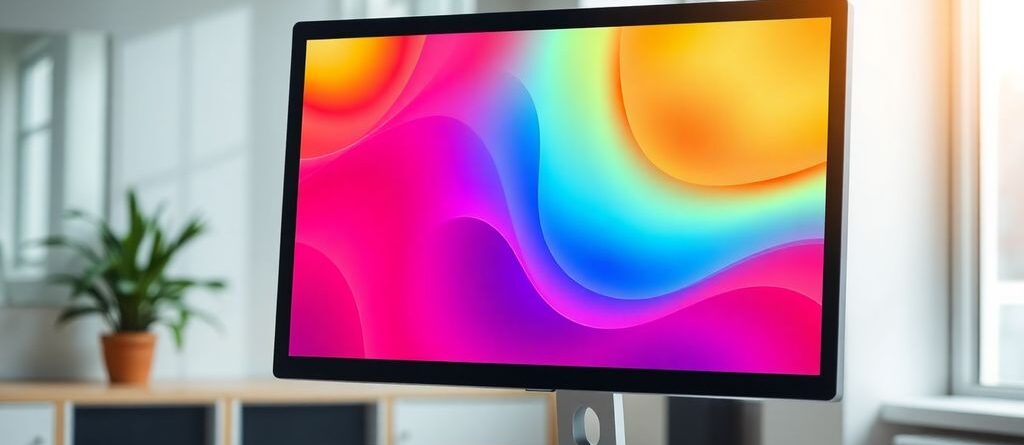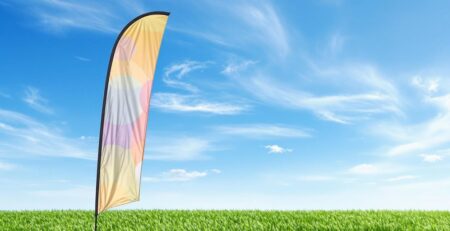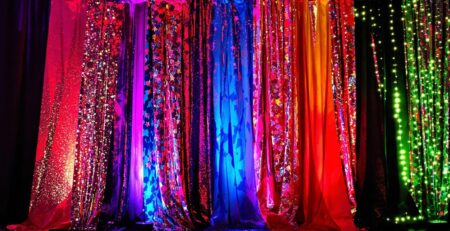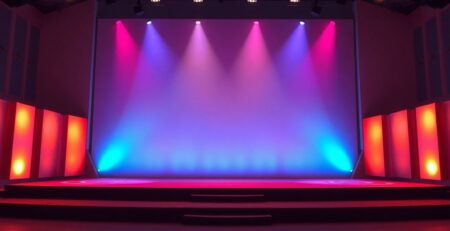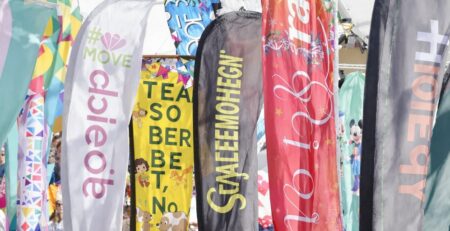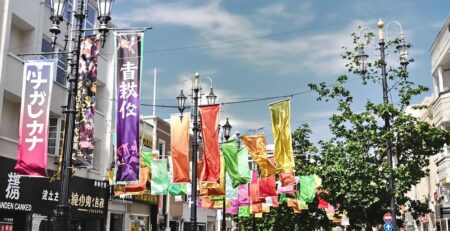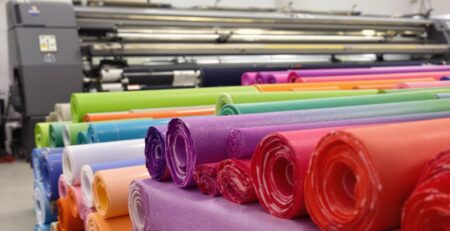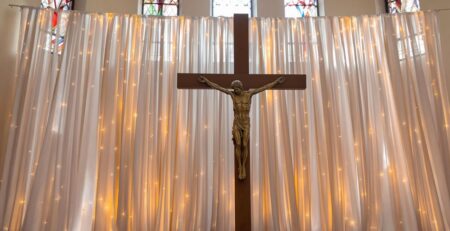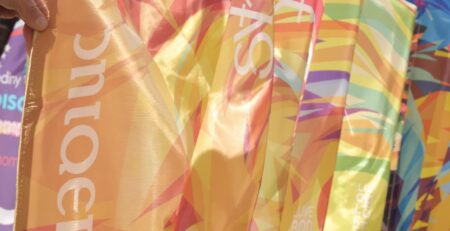Optimizing Your Website Banner Size for Maximum Impact in 2025
Getting your website banner size just right can really make a difference for your site. It’s not just about making things look good, though that’s part of it. It’s also about how fast your pages load and how well they work on phones, tablets, and computers. In 2025, with so many different devices out there, knowing the best website banner size is super important for grabbing people’s attention and making your site run smoothly.
Key Takeaways
- A good website banner size balances how it looks with how fast your page loads.
- Different spots on your website, like the top or the side, need different banner sizes.
- Banners have to change their size to fit all kinds of screens, from tiny phones to big monitors.
- Banner ads have their own rules for size, often set by the ad platform you’re using.
- Making your banners smaller in file size helps your website load faster, which is good for everyone.
Understanding Website Banner Size Fundamentals
Defining Optimal Website Banner Size
Okay, so what even is the "optimal" banner size? It’s not a one-size-fits-all deal, unfortunately. It really depends on where the banner is going, what you’re trying to achieve, and who you’re trying to reach. Think of it like choosing the right tool for a job. A tiny banner won’t cut it if you’re trying to make a big statement, and a huge banner can slow everything down. We need to find that sweet spot. For example, a website banner might need to be 1200 x 400 pixels with a 3:1 ratio.
- Consider the banner’s placement on the page.
- Think about the message you want to convey.
- Factor in the device your audience will be using.
Balancing Visual Impact with Performance
This is where things get interesting. You want your banner to look amazing, right? Eye-catching graphics, clear text, the whole shebang. But if that amazing banner takes forever to load, people are going to bounce before they even see it. It’s a balancing act between visual appeal and keeping your page speed up. Nobody wants to wait an eternity for a website to load. Aim for compressed images to help with faster loading times.
Key Metrics for Banner Dimensions
Alright, let’s talk numbers. When we’re thinking about banner dimensions, there are a few key things to keep in mind. Width and height are obvious, but aspect ratio is also super important. It’s the relationship between the width and height, and it affects how your banner looks on different screens. Then there’s file size – smaller is better for faster loading. Here’s a quick rundown:
- Width: How wide the banner is (in pixels).
- Height: How tall the banner is (in pixels).
- Aspect Ratio: The ratio of width to height (e.g., 16:9, 3:1).
- File Size: How much space the banner takes up (in KB or MB).
Finding the right balance between these metrics is key to a successful banner. You want it to look good, load fast, and fit perfectly on the screen. It’s a bit of a Goldilocks situation – not too big, not too small, but just right.
Strategic Placement and Website Banner Size
Banner Size for Above-the-Fold Content
Above-the-fold content is what users see without scrolling, so your banner here needs to grab attention fast. The banner size significantly impacts initial user engagement. You want something big enough to be noticeable, but not so large that it pushes important content down. Think about a balance between visual appeal and immediate access to what your site offers. A common size for this placement is around 728 x 90 pixels (leaderboard) or even a full-width banner, but always test what works best for your audience.
Optimizing Banners for Sidebar Integration
Sidebars offer a different opportunity. Here, banners are usually smaller and more vertical. The goal is to complement the main content without being too intrusive. A medium rectangle (300 x 250 pixels) or a wide skyscraper (160 x 600 pixels) often works well. Consider these points when designing sidebar banners:
- Keep the file size small to avoid slowing down the page.
- Use clear and concise messaging.
- Ensure the banner design aligns with the overall site aesthetic.
Full-Width Banners and User Engagement
Full-width banners stretch across the entire screen, offering a large canvas for visuals and messaging. These are great for making a statement, but they can also be overwhelming if not done right. A good size for a website banner is around 1200-1600 pixels wide and 300-500 pixels high. Here’s how to maximize user engagement with full-width banners:
- Use high-quality images that are optimized for the web.
- Incorporate a clear call-to-action.
- Ensure the banner is responsive and looks good on all devices.
Full-width banners can be incredibly effective if used strategically. They provide a great opportunity to showcase your brand or promote a specific product or service. However, it’s important to test different designs and sizes to see what resonates best with your audience. Don’t be afraid to experiment and iterate based on the data you collect.
Responsive Website Banner Size for All Devices

It’s 2025, and if your website banners aren’t looking great on every device, you’re missing out. People are browsing on everything from huge desktop monitors to tiny smartwatches, so your banners need to adapt. It’s not just about making them fit, but making them look good and load fast, no matter the screen.
Adapting Banners for Mobile Screens
Mobile is king. More people are using their phones to browse the web than ever before. This means your banners must be optimized for smaller screens. Forget about just shrinking a desktop banner; you need to think about how it looks and functions on a phone. Things to consider:
- Size: Keep file sizes small. Mobile users are often on the go, and they don’t want to wait for a huge banner to load. Compressing banners for faster loading is key.
- Readability: Text needs to be clear and easy to read on a small screen. Use larger fonts and high contrast.
- Touch: Make sure any buttons or links are easy to tap with a finger. No one wants to struggle to click a tiny button.
A good approach is to design mobile-first. Start with the smallest screen and work your way up. This forces you to prioritize the most important information and design elements.
Tablet-Friendly Banner Dimensions
Tablets are kind of the forgotten middle child, but they still matter! They’re bigger than phones but smaller than laptops, so you need a banner size that works for them. Here’s the deal:
- Balance: Find a size that looks good without being too large or too small. A banner that’s too big will slow down the page, and one that’s too small will look out of place.
- Orientation: Tablets can be used in portrait or landscape mode, so your banner should look good in both orientations. Consider using flexible layouts that adapt to the screen orientation.
- Resolution: Make sure your banner is high-resolution enough to look sharp on tablet screens, which often have higher pixel densities than older desktop monitors. A website banner should be crisp.
Ensuring Cross-Device Consistency
Consistency is key. You want your brand to look the same no matter what device someone is using. Here’s how to make it happen:
- Responsive Design: Use responsive design techniques to create banners that automatically adjust to different screen sizes. This involves using flexible grids and images that scale proportionally.
- Media Queries: Use CSS media queries to serve different banner sizes and styles based on the screen size. This gives you more control over how your banners look on different devices.
- Testing: Test your banners on a variety of devices to make sure they look good and function properly. Use browser developer tools to simulate different screen sizes and resolutions. Don’t forget to test on real devices too! Here’s a table of common banner sizes to consider:
| Device | Banner Size (pixels) | Aspect Ratio |
|---|---|---|
| Mobile | 320 x 50 | 6.4:1 |
| Tablet | 728 x 90 | 8.1:1 |
| Desktop | 970 x 250 | 3.88:1 |
Website Banner Size for Advertising Campaigns

Standard Ad Banner Dimensions
When you’re setting up an advertising campaign, banner size really matters. It’s not just about making something look good; it’s about fitting into the spaces that ad platforms give you and grabbing people’s attention effectively. Different platforms have different standard sizes, and sticking to those is usually the best way to go.
Here’s a quick rundown of some common banner sizes:
- Leaderboard: 728 x 90 pixels – Great for the top of web pages.
- Medium Rectangle: 300 x 250 pixels – A versatile size that fits in sidebars or within content.
- Wide Skyscraper: 160 x 600 pixels – Good for sidebars, offering a tall, noticeable presence.
- Mobile Banner: 320 x 50 pixels – Designed specifically for smaller mobile screens.
Platform-Specific Banner Size Requirements
Each advertising platform, like Google Ads or social media sites, has its own set of rules for banner sizes. What works on one platform might not be ideal (or even allowed) on another. For example, Google Ads provides optimal sizing guidelines for their display network. Always check the platform’s guidelines before you start designing. This will save you time and effort in the long run. Here’s a table showing some examples:
| Platform | Recommended Banner Sizes |
|---|---|
| Google Ads | 728×90, 300×250, 160×600, 320×50 |
| Facebook Ads | 1200×628 (for link ads), various sizes for other placements |
| Instagram Ads | 1080×1080 (square), 1080×1920 (stories) |
It’s a good idea to create multiple versions of your banner in different sizes to maximize your reach across various platforms. Don’t just assume one size fits all; tailor your approach to each platform’s specific requirements.
Maximizing Click-Through Rates with Banner Size
Banner size can actually affect how many people click on your ad. A well-sized banner is more likely to be seen and clicked. Think about it: a banner that’s too small might get lost on the page, while one that’s too big could be intrusive and annoying. You want to find that sweet spot. Also, consider the placement of your banner. A banner above the fold (visible without scrolling) is more likely to get noticed. Experiment with different sizes and placements to see what works best for your audience. Keep an eye on your click-through rates (CTR) and adjust your strategy as needed. Don’t forget about retractable banners for physical locations, which offer a different kind of impact.
Here are a few tips to boost your CTR:
- Use clear and concise messaging.
- Include a strong call to action.
- Make sure your banner design is visually appealing and relevant to your target audience.
Impact of Website Banner Size on Page Speed
Compressing Banners for Faster Loading
Okay, so you’ve got this awesome banner, right? It looks great, but it’s slowing down your page. That’s no good. Compressing your banners is a must. Think of it like this: you’re squeezing all the air out of a package to make it smaller and lighter. Image compression does the same thing, reducing the file size without (hopefully) making the banner look terrible. There are a bunch of online tools that can help with this, and honestly, it’s one of the easiest things you can do to speed things up.
Image File Formats and Banner Size
Choosing the right file format is surprisingly important. It’s not just about what looks good; it’s about what loads fast. Here’s the lowdown:
- JPEG: Good for photos and images with lots of colors. Usually smaller file sizes, but can get a little blurry if you compress them too much.
- PNG: Better for graphics, logos, and images with text. They keep things sharp, but the file sizes can be bigger than JPEGs.
- WebP: This is the new kid on the block, and it’s often the best of both worlds. It can give you smaller file sizes than JPEGs with better quality, and supports transparency like PNGs. If your site supports it, definitely give WebP a try.
Minimizing Page Weight with Efficient Banners
Page weight is basically how much data your website has to load. The heavier the page, the slower it loads. Banners can be a big part of that weight, especially if you’re not careful. Here’s how to keep things light:
- Resize your banners: Don’t upload a huge image and then shrink it down in your HTML. Resize it to the exact dimensions you need before uploading.
- Optimize your images: Use compression tools to reduce file size without sacrificing too much quality.
- Consider lazy loading: This means the banner only loads when it’s about to come into view. It can really help speed up the initial page load.
A slow website is a death sentence. People are impatient. If your page takes too long to load, they’re going to bounce. Optimizing your banners is a simple way to keep people on your site and improve website page speed. It’s worth the effort.
Designing Effective Website Banners
Visual Hierarchy and Banner Size
When crafting website banners, it’s important to think about visual hierarchy. The size of your banner elements should guide the viewer’s eye. Larger elements naturally attract more attention. Consider these points:
- Use size to emphasize key messages.
- Ensure the most important information is the most prominent.
- Balance the size of text, images, and calls to action.
Text Readability on Various Banner Sizes
Readability is key! A banner that can’t be easily read is a wasted opportunity. Here’s what to keep in mind:
- Choose fonts that are clear and legible at different sizes.
- Use sufficient contrast between the text and background.
- Adjust font sizes based on the banner’s dimensions.
Call-to-Action Placement within Banners
Your call-to-action (CTA) is what drives conversions. Placement is everything. Think about these strategies:
- Make the CTA button visually distinct.
- Place the CTA in a prominent location, like the right side or center.
- Use action-oriented language that encourages clicks. For example, consider using banner printing services to create visually appealing banners.
Effective banner design isn’t just about aesthetics; it’s about guiding the user toward a specific action. A well-placed CTA, combined with clear messaging and a visually appealing design, can significantly improve your banner’s performance.
Future-Proofing Your Website Banner Size Strategy
Anticipating Display Technology Trends
It’s tough to predict the future, but we can make educated guesses. Think about how screen resolutions have changed over the last decade. What was once considered high-definition is now standard. Keep an eye on emerging display technologies like foldable screens, larger monitors, and advancements in VR/AR, as these will influence optimal banner sizes. We need to be ready to adapt.
Scalable Banner Design Principles
Instead of creating fixed-size banners, aim for scalable designs. This means using vector graphics (SVGs) whenever possible, as they can be scaled without losing quality. Also, consider using flexible layouts that adapt to different screen sizes. Here are some tips:
- Use relative units (percentages) instead of fixed pixels for sizing elements.
- Employ media queries in your CSS to adjust banner layouts based on screen size.
- Design banners with a clear focal point that remains effective even when the banner is scaled down.
Regularly Reviewing Banner Performance
Don’t just set it and forget it! Banner performance should be reviewed regularly. Use analytics tools to track click-through rates, conversion rates, and bounce rates. A/B test different banner sizes and designs to see what works best for your audience. This is an ongoing process, not a one-time task. You should also check screen printer forums for the latest trends.
It’s easy to get caught up in the initial design and launch of your website banners, but the real work begins after they go live. Regularly monitoring their performance and making adjustments based on data is key to maximizing their impact over the long term. Don’t be afraid to experiment and try new things, but always base your decisions on solid data.
Here’s a simple table to track banner performance:
| Metric | Description | Target Value |
|---|---|---|
| Click-Through Rate | Percentage of users who click the banner | >1% |
| Conversion Rate | Percentage of users who complete a desired action | >5% |
| Bounce Rate | Percentage of users who leave after viewing the banner | <40% |
Making sure your website banners always look good, no matter what device people use, is super important. Don’t let your banners look bad on different screens! Learn how to make your banners work everywhere by checking out our tips on 99banners.com.
Conclusion
So, getting your website banner size just right for 2025 really matters. It’s not just about making things look good; it’s about making sure your site works well for everyone, no matter what device they’re using. If your banners are too big, your site might load slow, and people will just leave. If they’re too small, they won’t make much of an impact. Finding that sweet spot means your message gets seen, your site runs fast, and visitors have a good time. It’s a small detail that makes a big difference in how people see your brand.
Frequently Asked Questions
How big should image files be for a website?
For most websites, images should be no bigger than 20 megabytes. But usually, images that are 2 megabytes or smaller are totally fine.
What’s the best size for a website banner?
The best size for a website banner depends on where it will be placed and what it’s for. For example, banner ads have different size rules than banners on your own website.
What are common sizes for desktop banners?
A good banner for a desktop computer can be as wide as 1600 pixels and as tall as 500 pixels.
What are some standard sizes for banner ads?
For banner ads, common sizes are 728 x 90 pixels (leaderboard), 320 x 50 pixels (wide skyscraper), and 300 x 250 pixels (medium rectangle). But always check with the ad platform you’re using, like Google Ads, as they might have specific requirements.
Does banner size impact website loading speed?
Yes, the size of your website banners can definitely affect how fast your website loads. Large banner files can slow things down.
How can I make my website banners load faster?
To make your banners load faster, you can compress them (make their file size smaller) and choose the right image file type. This helps your website feel snappy and quick.

